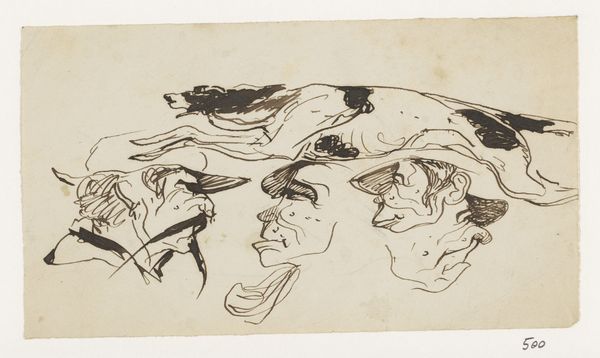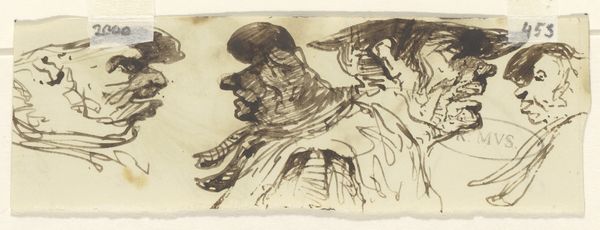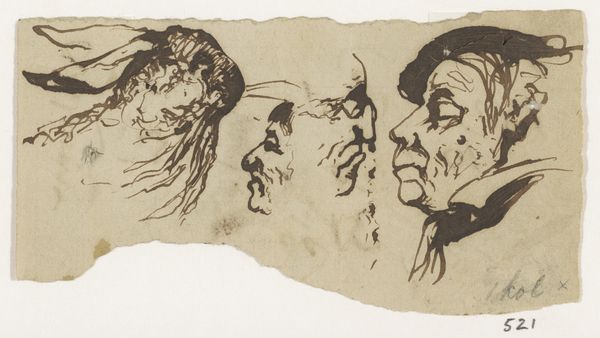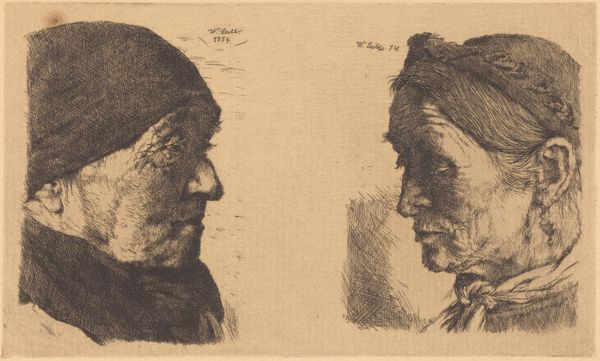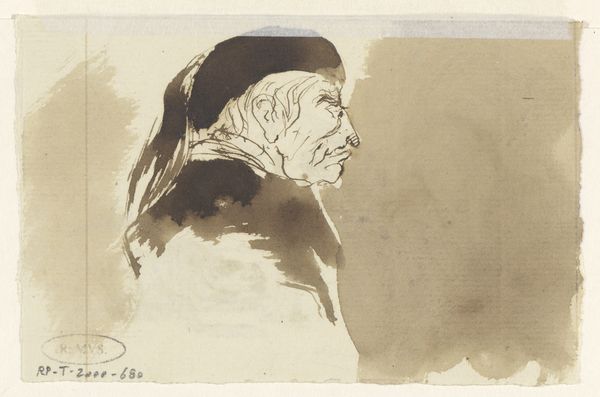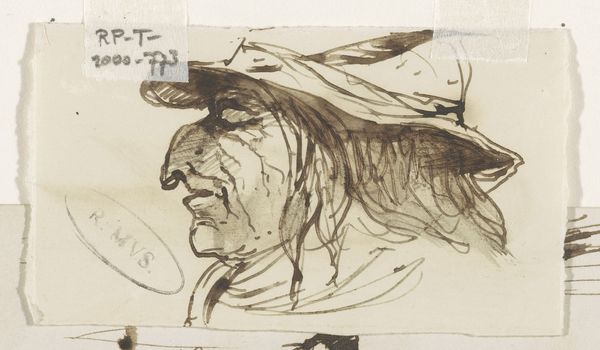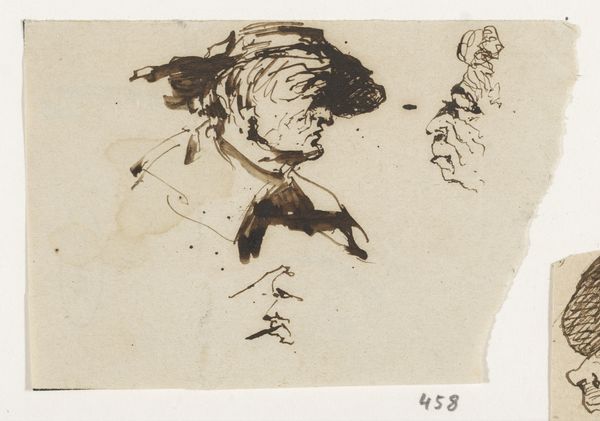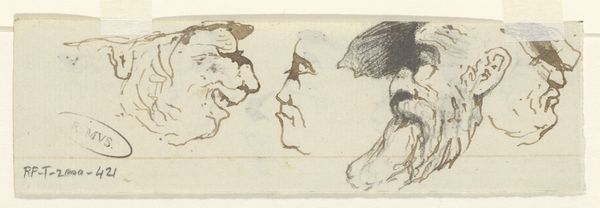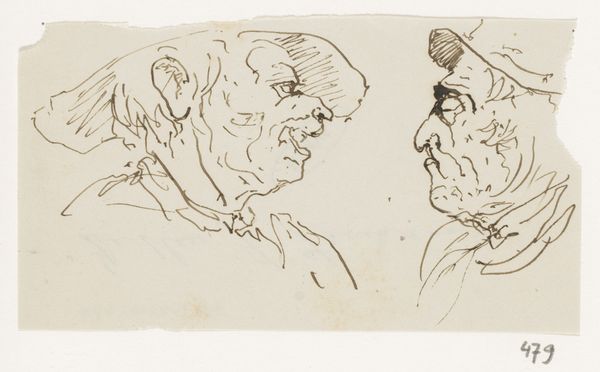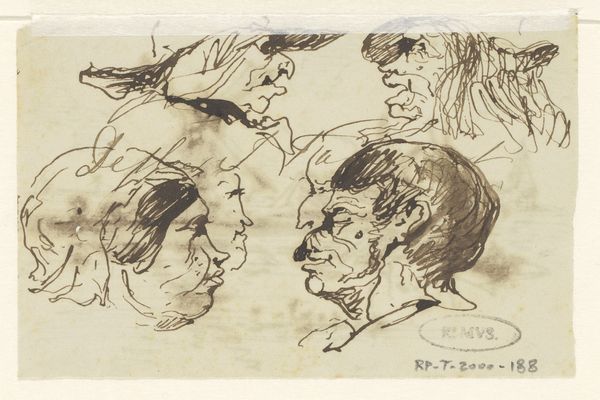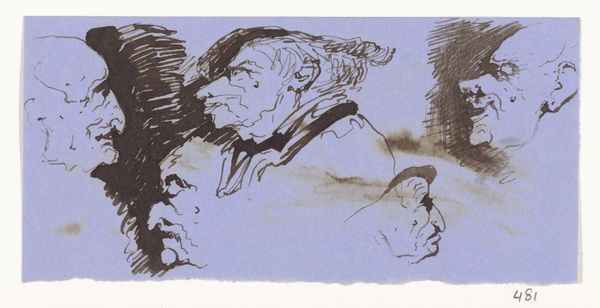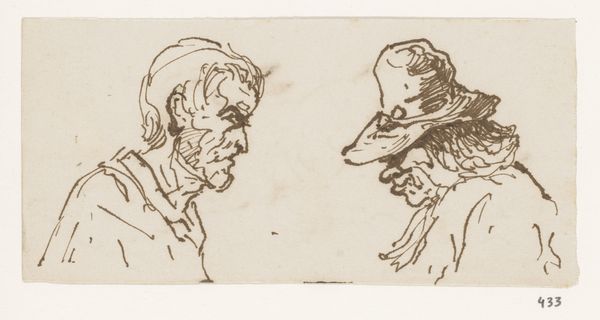
drawing, ink, pen
#
portrait
#
drawing
#
ink drawing
#
pen sketch
#
figuration
#
ink
#
pen
Dimensions: height 37 mm, width 110 mm
Copyright: Rijks Museum: Open Domain
Curator: Welcome. Here we have "Vijf Koppen," or "Five Heads," a drawing in ink and pen, made sometime between 1840 and 1880 by Johannes Tavenraat. Editor: The stark contrast created by the ink immediately gives it an almost ghostly quality. They seem like half-formed memories, or sketches rapidly capturing fleeting expressions. Curator: The artist’s rapid, almost frenetic, application of ink certainly emphasizes the preliminary nature of this work. Notice how Tavenraat uses hatching and cross-hatching to suggest volume and shadow, defining each head's individual character, though none are fully rendered. Editor: It's interesting how the stark use of ink— the raw material of communication and documentation— speaks to the context of its creation. We have a glimpse of a bygone era through the material means used to capture it: the textures of paper absorbing ink, the craftsman laboring to record fleeting moments, the consumer desire for portraiture... all are deeply embedded in its physical existence. What social narratives or statements about artistic labour do you observe from the artist’s choice to employ such economical materials? Curator: Perhaps. However, I'm struck by how Tavenraat manipulates light and shadow, particularly in the leftmost figure. It's not about historical labor, but the tension between presence and absence, clearly articulated by formalist structures. This visual language—ink as a metaphor for thought itself, emerging from darkness— transcends its material constraints. Note also how line quality varies across the page: Thick, decisive strokes define contours, while delicate, feathery lines suggest softer details. The composition, fragmented as it is, guides the viewer's eye across a series of psychological studies in miniature. Editor: Yet, can we really detach these sketches from the socio-economic landscape that fostered their creation? The very act of choosing pen and ink over more elaborate media like painting is in itself a statement about access, affordability, and the democratization of image-making during that period. This isn't merely about individual expression, but about the expansion of art practices. Curator: Still, regardless of such speculations, I find its composition an exercise in tonal harmony. The stark blacks balanced by areas of untouched paper creates an exquisite tension that holds my attention, and makes one want to contemplate this object, and all its internal consistencies. Editor: I agree—despite our different focus points. The interplay between material economy and the subject matter's immediacy makes “Five Heads” more than just a study of form. It's a mirror reflecting not just faces, but also the hands that created them, the means that shaped them, and ultimately, the world that they inhabited.
Comments
No comments
Be the first to comment and join the conversation on the ultimate creative platform.
